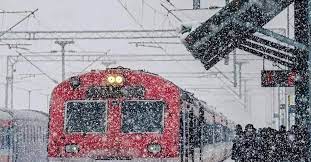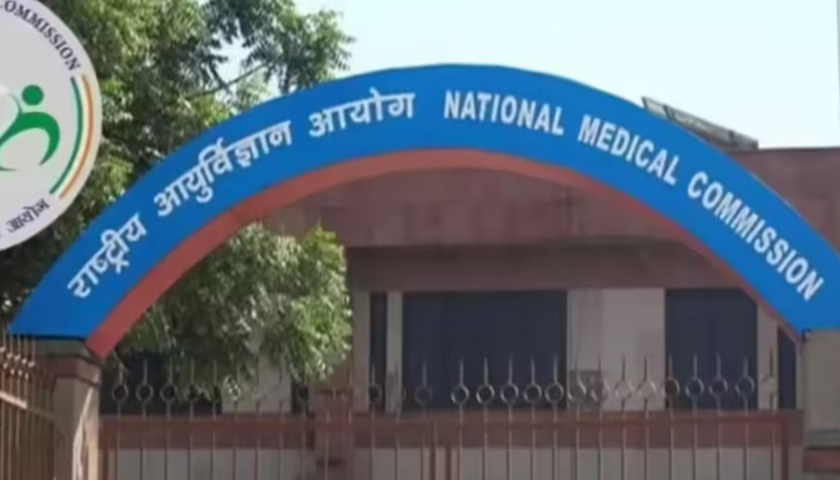NH-44 Disrupted: Special Train Between Katra and Banihal to Run for 15 Days
By: Javid Amin | 18 September 2025
When Highways Fail, Rail Steps In
The Srinagar–Jammu National Highway (NH-44), the arterial lifeline of Kashmir, has long been a symbol of connection—linking valleys, cities, and livelihoods. Yet, in September 2025, the highway’s chronic vulnerabilities were laid bare once again. Landslides and repair works in the Ramban sector brought a key stretch to a near-standstill, disrupting travel, trade, and tourism.
In response, the Indian Railways announced a special 15-day train service between Katra and Banihal, intended to provide relief to stranded passengers, support tourism, and partially offset economic losses caused by the highway disruption.
Northern Railways described the initiative as “a temporary but crucial measure to ensure connectivity and reduce public hardship,” highlighting the increasing reliance on rail as an alternative when road networks fail.
NH-44: The Lifeline Under Strain
Historical Vulnerabilities
NH-44 has faced recurring challenges for decades:
-
Ramban Sector Landslides: Seasonal rains and unstable slopes often block the highway for days.
-
One-Way Traffic Bottlenecks: Temporary diversions reduce multi-lane capacity, causing congestion.
-
Incomplete Widening and Tunnel Delays: Projects like Qazigund–Banihal tunnel have mitigated some risk but remain insufficient during emergencies.
Former Chief Minister Omar Abdullah has criticized the reactive approach:
“The highway is touted as strategic, yet even basic traffic flow and emergency response remain unpredictable. Road connectivity is about governance as much as infrastructure.”
The Special Train: Route, Schedule, and Purpose
The 15-day special train service is structured as follows:
-
Route: Katra ↔ Banihal
-
Duration: September 20 – October 4, 2025
-
Frequency: Twice daily
-
Tentative Stops: Udhampur, Qazigund, Anantnag
-
Purpose: Passenger relief, tourism support, emergency transit
Northern Railways emphasized that the service will cater to:
-
Pilgrims visiting Vaishno Devi
-
Tourists heading to Kashmir Valley
-
Locals stranded due to highway closures
This initiative, though temporary, signals an urgent recognition of Kashmir’s fragile connectivity infrastructure and the cascading impact of NH-44 disruptions on daily life and the economy.
Economic and Tourism Fallout
The NH-44 blockage has not just inconvenienced travelers—it has struck at the heart of Kashmir’s economy.
Tourism Sector
-
Hotels in Srinagar, Gulmarg, Pahalgam, and Sonamarg report 40–60% drop in occupancy.
-
Tour operators have canceled packages due to uncertain travel times.
-
Pilgrims and domestic tourists have faced long delays, impacting local transport and hospitality revenue.
Former CM Omar Abdullah stressed the importance of coordinated promotion and infrastructure:
“Promotion alone cannot revive tourism. Roads, safety, and real-time connectivity are non-negotiable.”
Horticulture and Trade
-
Apple-laden trucks remain stranded across Sopore, Shopian, and Pulwama.
-
Losses from delayed fruit transport exceed ₹1,200 crore in the 2025 harvest season.
-
Fruit traders argue that rail transport, while helpful, cannot match the volume and speed required to move perishable produce.
Sajad Lone, Peoples Conference president, criticized selective logistics:
“Inclement weather is understandable, but administrative delays and preferential clearance are harming livelihoods. Growers and transporters cannot wait.”
Political Dimensions
The NH-44 disruption has also sparked political debate:
-
Opposition voices: CPI-M leader Tarigami called for proactive road maintenance and contingency planning for key corridors.
-
PDP’s Mehbooba Mufti urged the government to ensure livelihood protection and real-time updates for affected communities.
-
LG administration officials maintain that weather and terrain are primary challenges but face criticism over delayed coordination and communication with the public.
The deployment of a temporary rail service underscores both the necessity of alternatives and the limitations of existing infrastructure and governance mechanisms.
Human Impact: Lives on Hold
While statistics paint one picture, the human cost is immediate and profound:
-
Students and patients endure long detours or overnight delays.
-
Tourists face disrupted itineraries, leading to canceled bookings and frustrated visitors.
-
Local businesses—hotels, taxis, and eateries—lose income during the critical peak season.
A travel operator in Srinagar commented:
“The train is welcome, but it is only a patchwork. Kashmir’s connectivity must be resilient, not temporary.”
Lessons and Recommendations
Infrastructure and Governance
-
Weather-resilient engineering: Landslide barriers, slope stabilization, and pre-winter audits.
-
Alternate corridors: Mughal Road and Banihal–Qazigund diversions to reduce bottlenecks.
-
Emergency transport plans: Permanent rail and road contingencies for tourists, pilgrims, and essential goods.
Community Engagement
-
Real-time public dashboards for traffic updates.
-
Feedback mechanisms for commuters, traders, and tour operators.
-
Dedicated lanes for emergency services and perishable goods.
Economic and Tourism Safeguards
-
Coordinated fruit transport corridors with cold storage facilities.
-
Insurance and compensation schemes for farmers affected by delays.
-
Integrated tourism and logistics planning to prevent revenue losses during closures.
Bottom-Line: From Patchwork to Resilience
The 15-day Katra–Banihal train service is a welcome relief, but it cannot substitute for systemic improvement. NH-44 is more than a road—it is a symbol of Kashmir’s economic lifelines, dignity, and connectivity.
Political leaders, government agencies, and civil society must recognize that temporary fixes are insufficient. Sustainable, resilient solutions—road, rail, and governance—are essential to protect livelihoods, restore tourism confidence, and ensure that Kashmir remains accessible to all.
Until then, the Valley continues to move slowly, painfully, and in makeshift ways, reminding everyone that connectivity is not just asphalt—it is life, economy, and trust.




